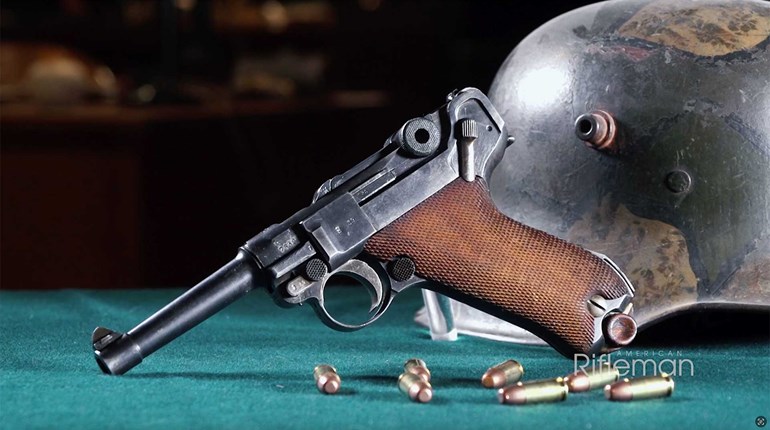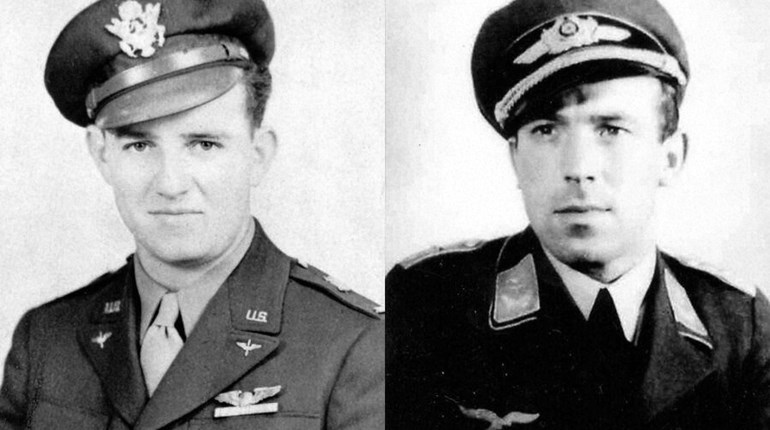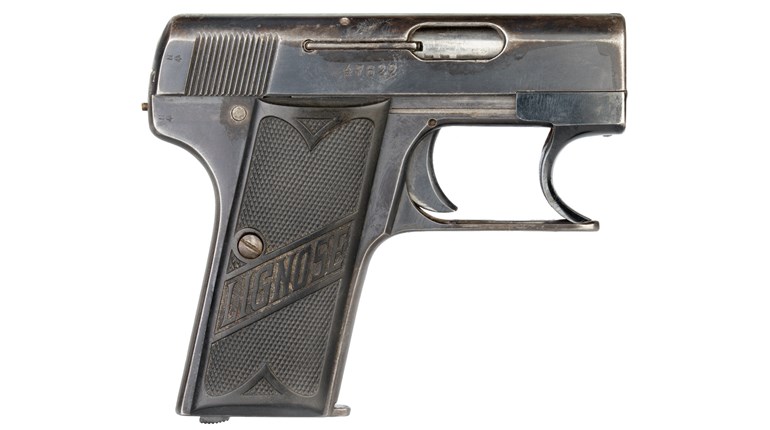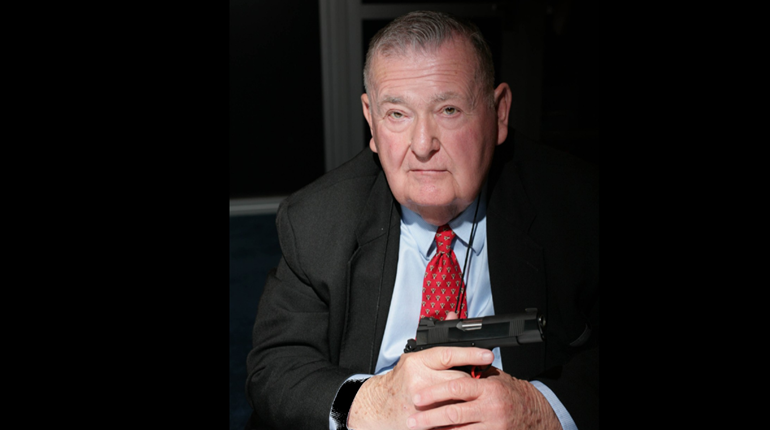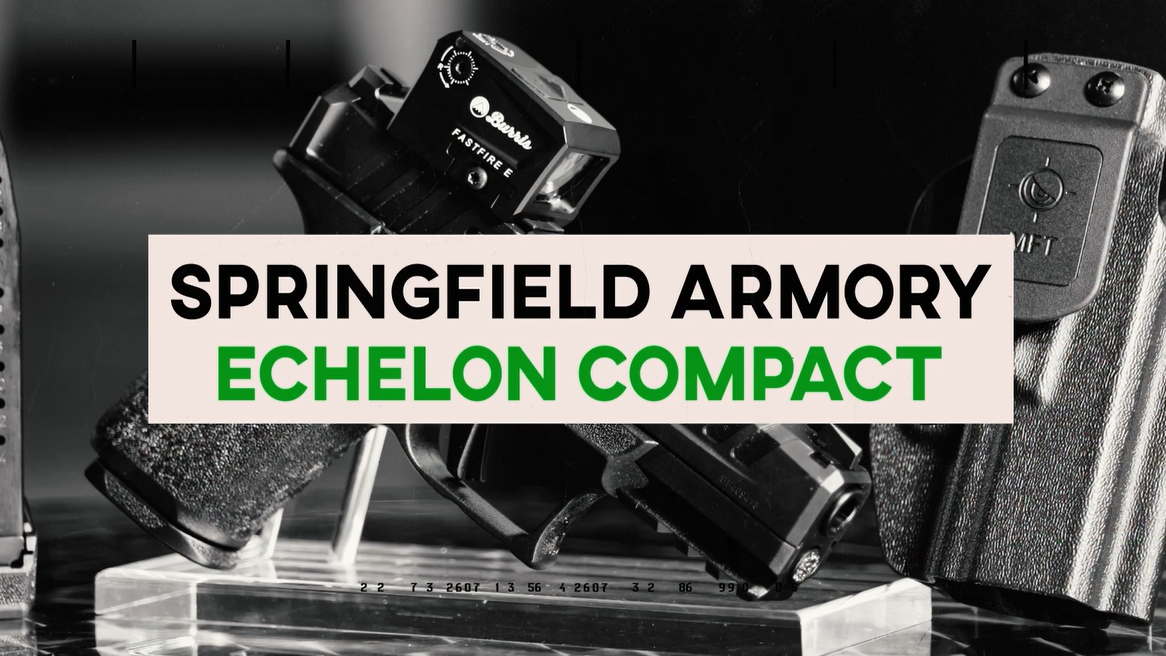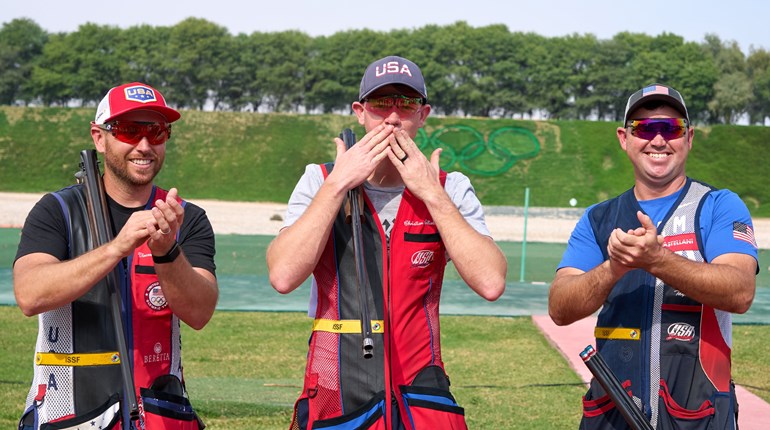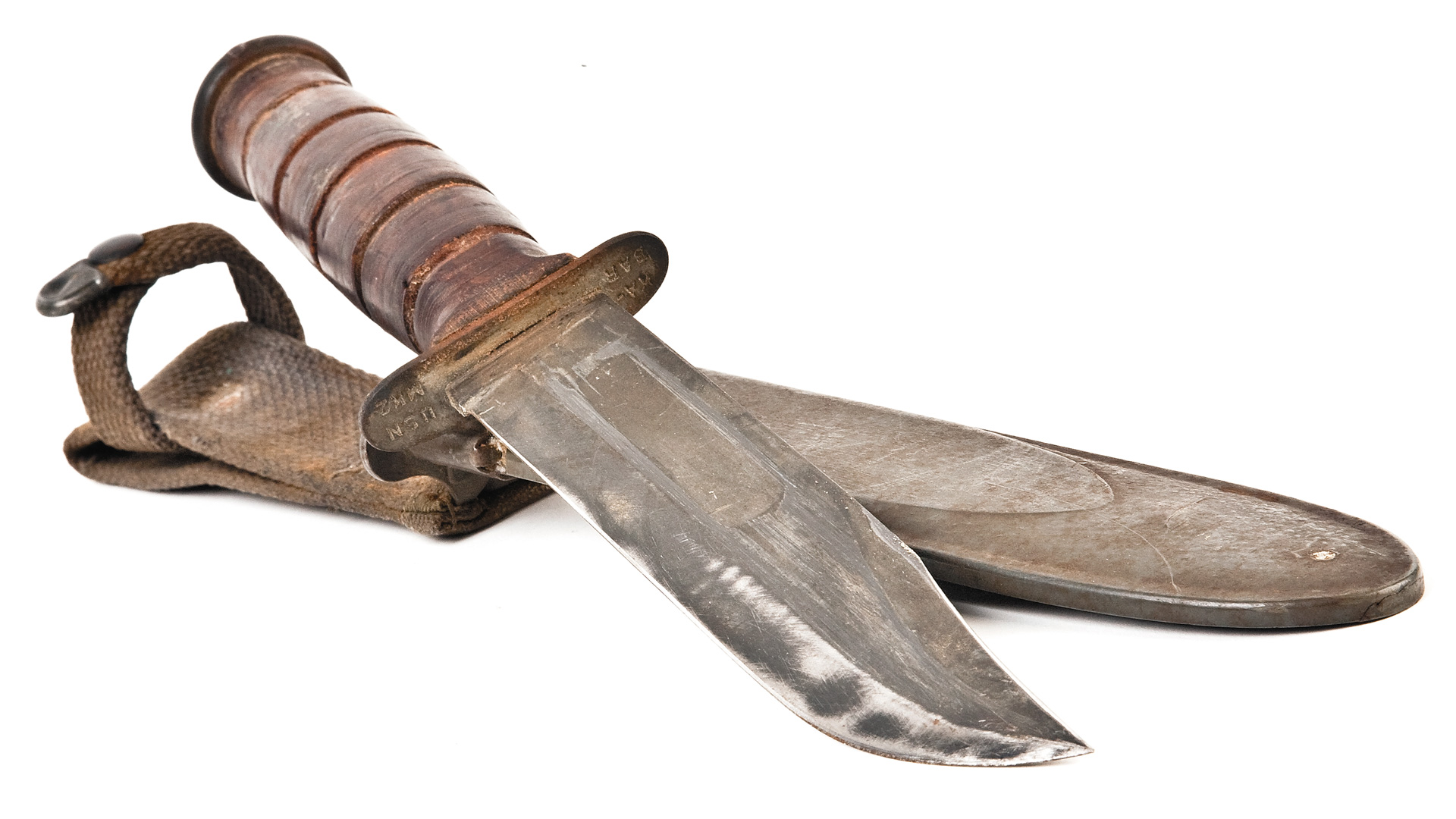
The Marines who landed on Guadalcanal in August of 1942 may have been taking part in the first offensive ground campaign of World War II, but they were a long way from being well equipped to do it. For example, their submachine guns were in most cases worn veterans of the banana wars—polished-blue commercial Thompsons on (extended) loan from the Postal Service.
Some regiments used ’03 Springfields and vintage World War I 37 mm cannons. The Raider and Parachute battalions had some exotic stuff in the Johnsons and Reisings, but everything from field phones to radios to uniforms to tents were either worn out or inadequate. They didn’t even have a decent field knife.
In the months and years that followed the first invasion, these matters were addressed. One of the first new items of equipment to arrive in the South Pacific was a knife that has gone on to become a symbol of the Marine Corps. It is called the Ka-Bar, and was first approved on Dec. 9, 1942, at a time when the battle for Guadalcanal was still in progress.
The knife got its name from the maker’s stamp on the blade of the first ones produced. The maker’s mark was KA-BAR and it represented an upstate New York company formed from an early group of cutlery manufacturers. The colorful name came from the 1920s, when a trapper wrote to the firm. He was full of praise for a blade so rugged that he used it to dispatch a wounded bear when his rifle jammed. The trapper’s scrawled commentary paper was almost illegible, with only “k...a...bar” decipherable at the key point. That was enough for the canny New Yorkers, and Ka-Bar became the firm’s name.
When the Marines were casting about for a good field knife, the Olean, NY, firm offered a blade that quickly evolved into the World War II Marine’s constant companion. With a 7-inch blued steel, clip-point blade and handle made of compressed leather washers, the first Ka-Bar was really a modified Bowie knife. They were all the more valuable for their markings—Ka-Bar on one side and USMC on the other.
The demand for “Knife, fighting/utility” grew so strong that the company could not make enough and other makers were contracted to take up the slack. World War II collectors recognize several different sources and even some slight variations in blade shape. Nonetheless, eventually, the USMC marking went away.
That tradition continued its way through World War II, Korea and Vietnam. Ka-Bars were issued widely in FMF units and were used for countless chores in the field. From whittling a field-expedient tent peg to chopping brush away to create an unobstructed field of fire, the ever-present Ka-Bar was the go-to tool.
Some phenomenal trades took place with the Ka-Bar as the major value on one side. Around Da Nang, you could usually (I was told) procure a jug of booze with a Ka-Bar. I know of one wounded Marine who traded his for a helicopter ride back to his outfit when they were headed to the DMZ. And I can truthfully report personal knowledge of a trade where a Ka-Bar changed hands for an almost new M2 carbine. Bad trade—the damned thing never shot very well.
They could also be used for fighting purposes. Such an incident happened in early 1966, when one of our night patrols surprised an enemy soldier guarding a trail. Our guy didn’t want to shoot because of the noise, so he drew his Ka-Bar. The Ka-Bar in question had whittled one too many bamboo tent pegs or opened one too many cases of ammo, because it was as dull as a 2x4. The resulting scuffle was getting out of hand, until the Marine realized he was a foot and a half taller and a hundred pounds heavier than his adversary, dropped the knife and just strangled him.
It’s always best to properly maintain your fightin’ iron.












